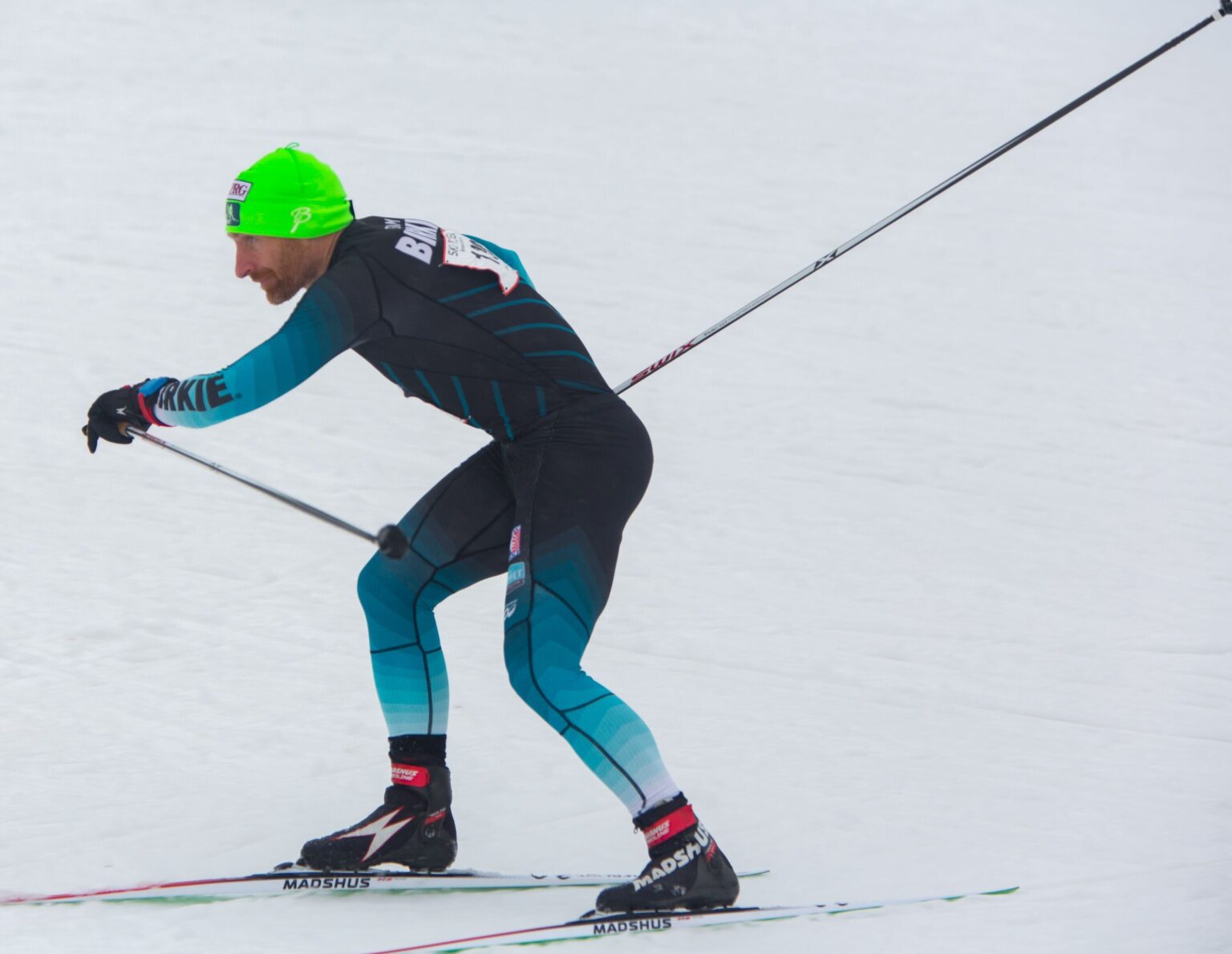Cross-country skier Brian Gregg, who finished first in Ski to Sea’s opening leg, said the 4-mile course is one of the most challenging in North America for his sport. Only someone as elite as Gregg, a former Olympian, would come out of such a difficult course and declare through a wide grin that it was “so much fun.”
Gregg, 37, participated in the 2014 Winter Games and has been the cross-country skier for the Boomer’s Drive-In team since high school. His idea of post-race recovery isn’t all that relatable to mortal athletes.
On Sunday, while still catching his breath post-race, Gregg said he would use the ensuing downtime — while everyone waits for the Mt. Baker Highway to reopen — to ski around with friends he had made on the cross-country circuit over the past couple decades.
One of the things that makes Ski to Sea unique is the athletic range of the participants. For every Olympian in the crowd, there are at least several dozen casual recreationists such as Trevor Snodgrass.
Snodgrass, 28, had been on cross-country skis all of three times before giving Ski to Sea’s first leg a try, with borrowed skis and with poles he admitted were too short for Mount Baker’s hilly, demanding course.
Snodgrass figured he wouldn’t need to do much to restore himself post-race. His biggest challenge, he said, would be recovering from his 3:45 a.m. wake-up time.
“I’ll sleep for a couple hours,” he said, before catching up with his team at the finish line.
Downhill ski participants admitted their leg takes a relatively light toll on the body. Austin Ruf, who came up from Seattle to join The Monkey Wrench Gang, went so far as to say the downhill leg was “luxurious” — although he was probably thinking of the run down the hill, not the hike up it.

Ruf and Brent Molesberry, the first downhill skier to cross the finish line Sunday, both agreed on this point: If you want to find out about recovery regimens, talk to the runners.
The running leg is all downhill and puts tremendous stress on a runner’s knees over 8 miles. Neil Morton, 56, said he was getting ready to make his fifth or sixth trip down the mountain in his sneakers. His preferred method of recovery was readily available at the end of the run.
“One thing I’ve done is take a soak in the river,” Morton said. “It’s a natural ice bath.”

Kaitlyn Caniglia, 24, didn’t know she was doing the running leg until the night before. She runs at least 4 miles a day, so she felt ready. She also popped a preemptive ibuprofen. She may ice her knees afterward, she said, but one item was most definitely on her post-race to-do list.
“I’m going to eat a lot,” Caniglia said. “I’m already thinking about it.”
The runners weren’t the only ones who had a tough go. Conditions on the race’s final leg were challenging this year.
“Coming back into the tide upwind was tough,” Boomer’s sea kayaker and third-place finisher Greg Redman said after the race. “I’m pretty darn tired,” Redman added, but not too tired to paddle back to where he had parked his car.
For Jonas Ecker, who paddled BEAVERS TREE SERVICE to a second-place finish, the kayak leg was a pleasant detour on his way to the International Canoe Federation world championships this summer. Ecker, 19, planned to take two days off and get “straight back to training.”
Wilson Reavley said he would pamper himself a little after helping Evil Bike Co finish in fourth place. He said he would “hop in the sauna and not move too much.”
Next behind Reavley in fifth place was Mike Beckman of VANDAMMAGE. He planned to take pampering to a new level, in the form of a local Mexican restaurant’s notoriously big margaritas.
“I’m gonna have two Big Mamas at Jalapeños tonight and sleep in,” Beckman said.




